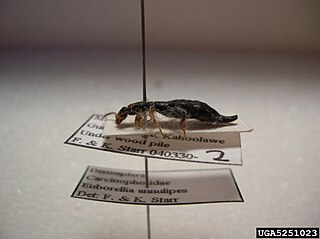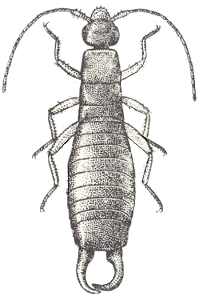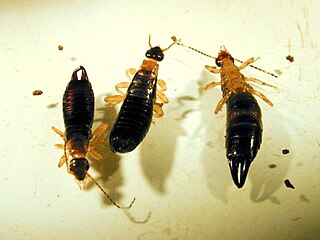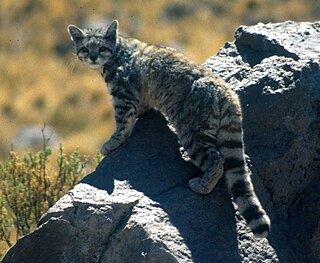
Anisolabididae is a family of earwigs, in the suborder Neodermaptera and the order Dermaptera.

Anisolabidinae, alternatively known as Carcinophorinae, Gonolabiinae, or Placolabidinae, is a subfamily of earwigs containing 17 genera.

Anisolabis is a genus of mostly Asian earwigs in the subfamily Anisolabidinae. It was cited by Srivastava in Part 2 of Fauna of India. The name Anisolabis stems from the asymmetry of the male cerci; the right cercus being more acute than the left.

Euborellia is a genus of earwigs in the subfamily Anisolabidinae. This genus, which has a world-wide distribution, was erected by Malcolm Burr in 1909 and was cited by Srivastava in Part 2 of Fauna of India.
Euborellia brunneri is a species of earwig in the family Anisolabididae.
Anisolabis breviforceps is a species of earwig in the genus Anisolabis, the family Anisolabididae, and the order Dermaptera. It was first classified in 1979 by Brindle.
Anisolabis hawaiiensis is a species of earwig in the genus Anisolabis, the family Anisolabididae, and the order Dermaptera. The species is native to Hawaii, and was first classified by Brindle in 1979.
Anisolabis howarthi is a blind, troglobite species of earwig in the genus Anisolabis, the family Anisolabididae, and the order Dermaptera. The species is native to Hawaii, and was first classified by Brindle in 1979. According to a paper published by him in 1980 in the journal Pacific Insects, the species is first known true troglobite earwig; while there are other blind species that live underneath soil or humus, this is the first to actually inhabit a cave.

The seashore earwig is a species of earwig in the family Anisolabididae. The species was first described in 1846 by Adam White. This species has a blackish-brown body with brown-yellow legs. It has two light brown spots on its head, close to the inside of each eye. Its abdomen is widest at the seventh segment. It is flightless. It is native to eastern Australia and New Zealand. Similar both ecologically and taxonomically to the maritime earwig, this species is commonly found on beaches under stones and debris. It is a carnivore, feeding on millipedes, flies, and isopods such as woodlice. Like most other earwigs, the females care for their young during development, and the larva go through five instars before becoming adults. The species also has a negative phototaxis, meaning that it tends to move away from a light source.

Anisolabis maritima, commonly known as the maritime earwig or the seaside earwig, is a species of earwig in the family Anisolabididae. Similar to the seashore earwig, this species can be found near the shore line, and is cosmopolitan. It can be found in almost all biogeographic realms. Scientists believe that these earwigs originally came from Asia. Since then, however, they have been introduced to North America, and have now spread around the world due to international commerce.
Anisolabis mauiensis is a species of earwig in the genus Anisolabis, the family Anisolabididae, and the order Dermaptera.
The Pacific earwig is a species of earwig in the genus Anisolabis, the family Anisolabididae and the order Dermaptera.
A. maritima may refer to:

On 19 August 2018, the IUCN Red List of Threatened Species identified 4584 endangered species, subspecies, stocks and subpopulations.




